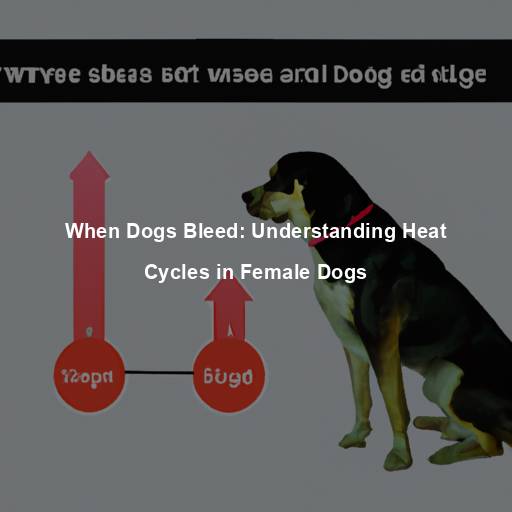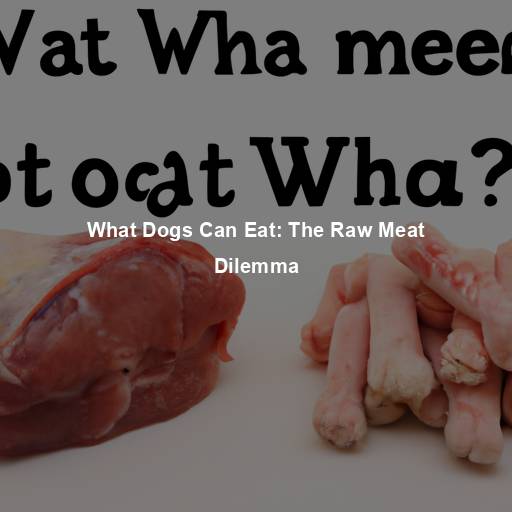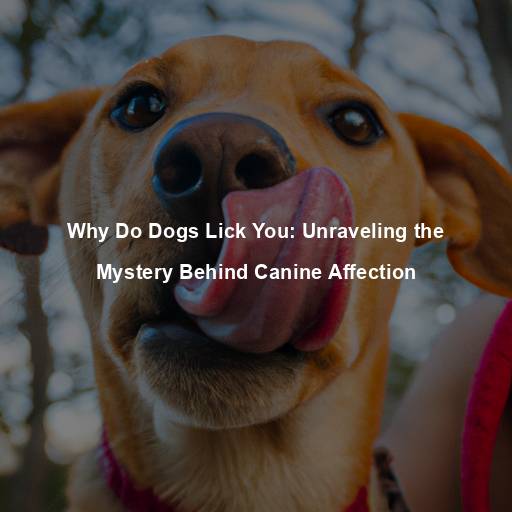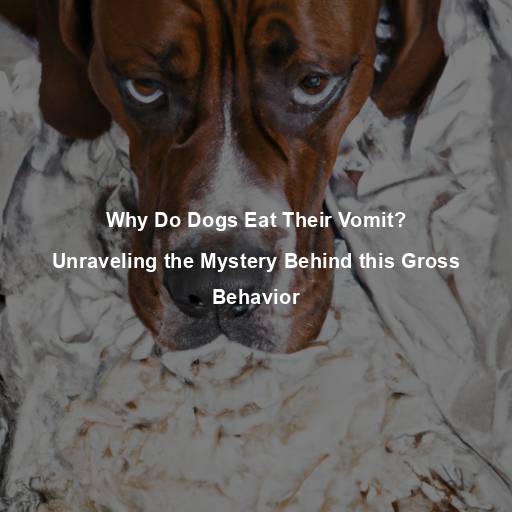When Dogs Bleed: Understanding Heat Cycles in Female Dogs
Last Updated on July 17, 2023 by Evan
Contents
- 1 Understanding the Heat Cycle
- 2 Signs and Symptoms of Heat
- 3 Clearing Up Misconceptions
- 3.1 Bleeding and Heat Are Not the Same
- 3.2 Spaying Does Not Stop the Heat Cycle Immediately
- 3.3 Not All Female Dogs Experience Behavioral Changes
- 3.4 Heat Cycles Do Not Indicate a Dog’s Readiness for Breeding
- 3.5 Heat Cycles Vary Among Breeds and Individuals
- 3.6 Behavioral Changes During Heat
- 3.7 Managing Behavioral Changes
- 4 Health Considerations During the Heat Cycle
- 5 FAQs: When Dogs Bleed Are They in Heat
- 5.1 What does it mean when a dog is in heat?
- 5.2 Do dogs always bleed when they are in heat?
- 5.3 Can a dog bleed without being in heat?
- 5.4 Are male dogs affected by a female dog in heat?
- 5.5 How can I tell if my dog is in heat?
- 5.6 Can dogs get pregnant at any time during their heat cycle?
- 5.7 How long does a female dog’s heat cycle typically last?
- 5.8 Should I spay my female dog to avoid heat cycles and associated bleeding?
Understanding the Heat Cycle
The heat cycle, also known as the estrous cycle, is a natural reproductive process that occurs in female dogs. It is essential for any dog owner, especially those considering breeding their pet or dealing with behavioral changes during this period. In this article, we will delve into the intricacies of the heat cycle, explore the signs and symptoms, and address common misconceptions.
What is the Heat Cycle?
The heat cycle is a hormonal process that prepares female dogs for potential mating and reproduction. It is characterized by various stages, each with its own unique physiological and behavioral changes. Unlike humans, dogs do not menstruate. Instead, they experience a period of fertility during which they are receptive to mating.
The Stages of the Heat Cycle
The heat cycle consists of four stages: proestrus, estrus, diestrus, and anestrus. Let’s examine each stage in detail:
In the fascinating world of canine reproductive cycles, we encounter the perplexingly mysterious proestrus stage. Clocking in at approximately 9 to 10 days, this enigmatic period starts with a burst of vulva swelling and a captivating crimson discharge. Curiously, female dogs remain uninterested in any amorous advances during this time, yet their pheromones act as an irresistible lure for their male counterparts.
- Estrus: The estrus stage, also known as “heat,” is when the female dog becomes fertile and receptive to mating. It usually lasts between 5 to 13 days, but the average is around 9 days. The discharge becomes lighter in color, pink, or straw-colored.
During the diestrus stage, a fascinating transformation occurs in female dogs. This mesmerizing period, which typically spans 60 to 90 days, marks the end of their receptive phase. Surging hormones drive the body to brace for potential pregnancy. However, if no baby plans materialize, diestrus gracefully concludes, ushering in yet another cycle of life’s intricate dance.
- Anestrus: Anestrus is the resting phase between heat cycles. It is a period of sexual inactivity and can last for several months. During this stage, hormonal levels stabilize, and the body recovers before the next heat cycle.
Signs and Symptoms of Heat
Understanding the signs and symptoms of the heat cycle is crucial for dog owners to provide appropriate care and manage their pet’s behavior effectively. Here are some common indicators to look out for:
When a dog is in the midst of their heat cycle, one of the most notable physical manifestations is a noticeably engorged vulva. This swelling is often accompanied by a discharge, tinted with a tracer of crimson, during the proestrus phase. It’s a natural part of their reproductive rhythm, but can leave pet owners somewhat perplexed by the curious changes their furry friend may be experiencing.
Discover the mysterious world of female dogs in heat as they embark on a mesmerizing journey of behavioral transformations. With a dash of enigma and a sprinkle of intrigue, these remarkable canines unveil their true essence. Behold as they become irresistibly loving, yearning for attention, and unraveling their pent-up restlessness through heightened activity. Witness their intricate dance of frequent urination and territorial marking, making their presence known in the most enigmatic way possible.
Unleashing a world of charm and allure, the fascinating realm of female dogs unleashes a potent weapon during their exhilarating estrus stage. Behold, the enchanting pheromones they emit, casting a perplexing spell on the unsuspecting males. As you venture into the great outdoors with your beloved canine companion, brace yourself for the unexpected encounters and gracefully embrace the dance of attraction, for intact males may display an unwavering determination in their pursuit of love.
- Mounting Behavior: Female dogs in heat may exhibit mounting behavior towards other dogs, both male and female. This is a common way for them to display their receptiveness to mating.
Clearing Up Misconceptions
There are several misconceptions surrounding the heat cycle in dogs. Let’s address some of the most common ones:
Bleeding and Heat Are Not the Same
It’s time to set the record straight: the crimson flow witnessed during a dog’s proestrus stage is far from being a canine counterpart of human menstruation. Let’s clear the air and unmask the confusion surrounding this matter. Dogs, unlike humans, don’t undergo the shedding of their uterine lining; rather, they encounter a distinctive bloody discharge, which serves as a telltale sign that they have reached the initial phases of their heat cycle.
Spaying Does Not Stop the Heat Cycle Immediately
While spaying (surgical removal of the ovaries and uterus) prevents future heat cycles, it does not stop an ongoing heat cycle. It is important to consult with a veterinarian to determine the best course of action if your dog is already in heat and you wish to have her spayed.
Not All Female Dogs Experience Behavioral Changes
While behavioral changes are common during the heat cycle, not all female dogs display noticeable differences in their behavior. Some dogs may exhibit more subtle signs, while others may have more pronounced changes. It is important to be familiar with your dog’s individual patterns and consult a veterinarian if you have concerns.
Heat Cycles Do Not Indicate a Dog’s Readiness for Breeding
When it comes to a dog’s heat cycle, things can get quite puzzling. Just because your furry friend is in heat, it doesn’t mean she’s all set for some puppy-making action. There’s this special phase called the estrus stage, and that’s when the magic can happen. However, it’s crucial to tread daintily and think long and hard before diving into the world of dog breeding.
Heat Cycles Vary Among Breeds and Individuals
Heat cycles can vary significantly among different dog breeds and individual dogs. While the average length and timing of the cycle may fall within certain ranges, it is important to remember that every dog is unique. Some dogs may have irregular cycles or exhibit variations in behavior throughout their heat cycle.
Behavioral Changes During Heat
Hailing from the mysterious realm of hormonal fluctuations and primal urges, the heat cycle in our beloved canine companions brings forth an array of intriguing behavioral phenomena. Brace yourselves, for we are about to embark upon a journey through the enigmatic stages of this captivating cycle. From the initial whispers of restlessness to the crescendo of olfactory-driven escapades, let us delve into the perplexing world of female dog behavior during their heat cycle.
Proestrus:
Restlessness and heightened activity levels are common signs observed among female dogs during the proestrus stage. This phase brings about a certain sense of restlessness, causing our furry companions to become more active than usual.
– Decreased Appetite: Some dogs may experience a temporary decrease in appetite during this stage.
– Nesting Behavior: It is not uncommon for female dogs to display nesting behavior, such as gathering blankets or toys to create a cozy space.
Estrus:
It’s no secret that when female dogs are in heat, they can exhibit a whole new level of friendliness. Suddenly, they’re seeking attention from everyone – both humans and fellow canines alike. It’s a perplexing yet fascinating phenomenon that leaves us wondering how their behavior can change so dramatically during this time.
– Increased Urination: Dogs in heat may urinate more frequently, often marking their territory with small amounts of urine.
– Vocalization: Some dogs may vocalize more during the estrus stage, expressing their readiness for mating.
Diestrus:
After the rollercoaster ride of hormonal fluctuations, female dogs finally find solace in diestrus as their behavior takes a refreshing turn towards tranquility. Gone are the days of restlessness and uncontrollable energy, as these furry companions embrace a newfound serenity. During this enigmatic phase, female dogs radiate an aura of calmness that captivates those around them, offering a respite from the chaos of their earlier stages.
– Decreased Interest in Mating: During this stage, the female dog is no longer receptive to mating and may show less interest in interaction with male dogs.
– Nesting Instinct: Some dogs may display nesting behavior during diestrus, preparing a space for potential pregnancy.
Managing Behavioral Changes
Understanding and navigating the whirlwind of behavioral changes that often accompany the heat cycle in dogs is crucial for every canine companion. To assist you in this perplexing journey, we have curated a collection of valuable tips to aid in managing the turbulent seas of your dog’s emotions. With this guidance in hand, you’ll be prepared to tackle the myriad challenges and uncertainties that arise during this burst of hormonal activity.
Provide a Safe and Controlled Environment:
During the scorching days of your female dog’s heat cycle, it is crucial to prioritize her well-being and prevent any unsolicited rendezvous. By diligently keeping her on a leash and closely monitoring her outdoor adventures, you can ensure that unexpected romantic encounters are kept at bay. Vigilance is key when it comes to safeguarding her from potential under-the-radar trysts.
– Secure Fencing: Ensure that your yard or outdoor area has secure fencing to prevent male dogs from gaining access to your female dog.
Maintain a Consistent Routine:
It’s no secret that incorporating regular exercise into your dog’s routine is a game changer. Not only does it help channel their boundless energy, but it also works wonders in curbing their unbridled restlessness. So lace up those sneakers and embark on a fitness journey with your furry companion – together, you’ll conquer the world one paw at a time!
– Maintain a Balanced Diet: Providing a nutritious and balanced diet can contribute to your dog’s overall well-being and help regulate hormonal fluctuations.
Consider Spaying:
- Consult a Veterinarian: Discuss the option of spaying with your veterinarian. Spaying can prevent future heat cycles and eliminate the risk of unintended pregnancies. It may also have health benefits for your dog, such as reducing the risk of certain reproductive diseases.
Health Considerations During the Heat Cycle
Proper Hygiene and Care:
When it comes to your furry friend’s heat cycle, it’s crucial to be extra mindful of their cleanliness and overall welfare. Taking the necessary steps to offer proper care will ensure their optimal health during this critical time. Here are a few essential factors to keep in mind as you navigate this journey with your beloved dog.
Maintain Cleanliness:
Maintaining proper hygiene in the delicate vulva area is crucial for preventing discomfort and potential infections. Take a gentle approach by using a damp cloth to clean this sensitive region, ensuring that you avoid harsh soaps or chemical-laden products that might disrupt its natural harmony. By adhering to these mindful practices, you can promote a healthier and more comfortable vulva experience.
Preventing Unplanned Pregnancy:
When it comes to your furry friend’s reproductive health, one important aspect is keeping her away from intact male dogs throughout her entire heat cycle, especially if you’re not looking to breed her. This proactive measure is crucial in preventing any unplanned encounters or unwanted puppies, ensuring peace of mind for you and your beloved pet. By managing her interactions with male dogs, you’ll have better control over her safety and well-being.
– Consider Protective Clothing: Some dog owners opt for specially designed doggie diapers or pants to prevent accidental mating and protect their furniture and carpets from any discharge.
Monitoring Health:
Taking care of your furry companion’s well-being is of utmost importance, especially during the heat cycle. It’s crucial to stay alert for any potential health concerns that might crop up. Let’s explore some key aspects to keep in mind when it comes to your dog’s health during this perplexing phase.
Watch for Signs of Infection:
When it comes to your furry companion, their behaviors can sometimes leave us puzzled. One peculiar behavior to look out for is excessive licking or scratching of their genital area. This could indicate a potential infection that requires veterinary attention. Don’t hesitate to reach out to your trusted veterinarian if you notice any peculiarities in your canine friend’s habits.
Keep an Eye on Discharge:
Keeping a close watch on your pet’s bodily functions is imperative, especially when it comes to their reproductive cycle. While some discharge is to be expected, it is crucial to remain vigilant and take note of any perplexing alterations in color, consistency, or odor. Should you detect any abnormalities, seek the advice of a trusted veterinarian to ensure your furry friend’s health and well-being.
Be Aware of Heat-Related Stress:
With the scorching heat of summer upon us, it’s crucial to keep a watchful eye on our furry companions, especially the lovely ladies in their heat cycle. We all know the joy they bring, but it’s important to acknowledge the risks they face during this time. To safeguard their well-being, provide them with a cool spot to retreat, ample hydration, and be mindful of curbing strenuous activities when the temperature rises. Stay informed and protect your four-legged darlings from the sweltering heat!
FAQs: When Dogs Bleed Are They in Heat
What does it mean when a dog is in heat?
When a darling canine has her “special time,” it means she’s entering the magical phase of her reproductive cycle, known as estrus, when her fertility is at its peak. During this bittersweet period, her body undergoes a whimsical transformation, all in preparation for potential love and, dare I say, puppies. This enchanting journey brings about both curious behaviors and charming physical signs, including a touch of delicate bleeding.
Do dogs always bleed when they are in heat?
Yes, most female dogs experience bleeding during their heat cycle. The bleeding, known as estrus bleeding, generally starts around the first week of their heat cycle and can last for about two to three weeks. However, the amount of bleeding varies among individual dogs. Some may have a heavier flow, while others may only have a light spotting.
Can a dog bleed without being in heat?
There’s this intriguing phenomenon where dogs may experience bleeding that has nothing to do with their heat cycles, raising a lot of eyebrows. It’s crucial not to jump to conclusions and think that any instance of bleeding in a female dog automatically means she’s in heat. The strange truth is that there can be a plethora of reasons behind this puzzling bleeding, ranging from urinary tract infections to unexpected injuries, or even the presence of dreaded tumors or polyps lurking within their reproductive tract. If you’re faced with the perplexing sight of abnormal bleeding in your furry friend, it’s strongly advised to seek the expert guidance of a veterinarian to unravel the enigma and provide appropriate treatment.
Are male dogs affected by a female dog in heat?
Yes, male dogs can be strongly influenced by the pheromones emitted by a female dog in heat. They may exhibit increased interest, restlessness, and even attempt to escape in pursuit of the female. It is important to keep male dogs securely leashed or safely confined during a female dog’s heat cycle to prevent unwanted mating or accidents.
How can I tell if my dog is in heat?
As dog owners, we all want to ensure the well-being of our furry companions. Understanding the signs of your dog’s heat cycle is crucial in order to provide proper care and prevent any unwanted surprises. One of the most prominent indications is the presence of a reddish discharge from her vulva, accompanied by a swollen or enlarged vulva. Additionally, you may notice changes in her behavior, such as increased clinginess or irritability, and an increased frequency of urination. Another noteworthy sign is when she begins to flag her tail to one side, signaling her readiness to attract male dogs. It is of utmost importance to closely monitor your dog during this perplexing period and take necessary precautions to avoid unwanted pregnancy or any unplanned encounters with male dogs.
Can dogs get pregnant at any time during their heat cycle?
It’s no secret that the reproductive journey of female dogs is quite the perplexing rollercoaster. While conventional wisdom suggests that they’re most fertile in the middle of their heat cycle, brace yourselves for a burst of surprise – these four-legged wonders can become pregnant anytime during their entire heat period. Yes, even before the teasing onset of bleeding or after it unexpectedly bids farewell. So, if you’re on a mission to keep your furry companion pregnancy-free and have no plans to unleash a canine family dynasty, buckle up and stay on high alert throughout her heat cycle.
How long does a female dog’s heat cycle typically last?
Doggy Delights Magazine is here to unravel the mystifying world of a female dog’s heat cycle. Prepare yourself for a rollercoaster ride of estrogen-driven emotions as we dive into the captivating trio of stages: proestrus, estrus, and diestrus. Proestrus takes the lead with its enigmatic start of bleeding, captivating our furry friends for a mesmerizing duration of 7 to 10 days. As we transition into estrus, the spotlight shines on fertility, enchanting us for a spellbinding 5 to 9 days. Brace yourself for the finale, where diestrus takes center stage, intriguingly lasting approximately 60 days, defying all expectations, whether a bun is in the oven or not. Don’t miss this captivating chronicle of doggy perplexity and burstiness!
Should I spay my female dog to avoid heat cycles and associated bleeding?
Spaying a female dog, also known as ovariohysterectomy, is a common procedure to prevent heat cycles and unwanted pregnancies. It involves the surgical removal of the ovaries and uterus. Besides eliminating the heat cycle, spaying also offers health benefits such as reducing the risk of certain reproductive diseases and eliminating the possibility of uterine infections (pyometra). If you are not planning to breed your dog, spaying is usually recommended by veterinarians, but it is always best to discuss the procedure and its implications with a qualified veterinarian.







